We all need a bit of escapism, and you can’t get more escapist than joining an expedition to a distant corner of the globe. I start this new year with a new series in which I’m going to look at the paintings and drawings made by those who did just that.
My own experience was when I lived in a tent on a small island off the Antarctic Peninsula, one of the team who first overwintered in tents there. The twelve of us spent nine months on the island, living much of the time in a penguin colony, although even they deserted us for the winter.
There has long been crossover between artists, illustrators and mapmakers like Nicholas Vallard, who painted what’s believed to be the first map of Australia, then termed the East Coast of Jave la Grande in 1547 (here shown in a much later print). Against a labelled outline of the coast, as far as it was known then, is a catalogue of people, their dwellings, beasts, and aquatic creatures that the artist thought might be found there.
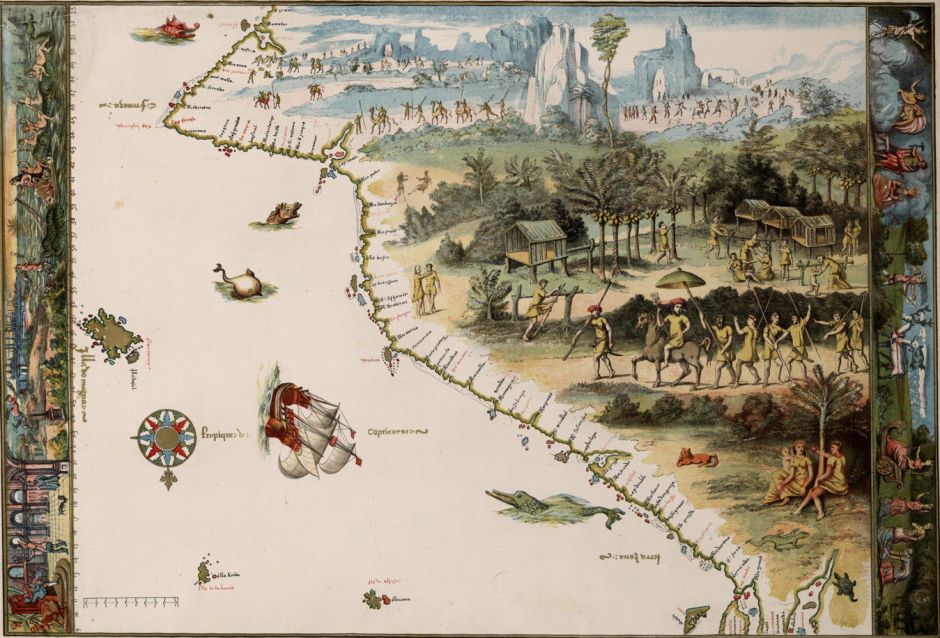
Exactly a century later, the German naturalist and biological illustrator Maria Sibylla Merian (1647-1717) was born in Frankfurt. In 1699, she travelled to Dutch Surinam to study the insect fauna there, which provided the copious illustrations for her book published in 1705.

In 1841, the Paris Salon was agog at three large paintings by François-Auguste Biard (1799–1882), showing the Arctic wastes of Spitsbergen, the coast of Greenland, and river rapids in northern Finland. In 1839 he had left France to act as unofficial artist to the Le Recherche French Admiralty expedition which went into the far north, to the remote island of Spitsbergen. The expedition also visited the Faroe Islands, Iceland, and the coast of Greenland, returning to France in 1840.
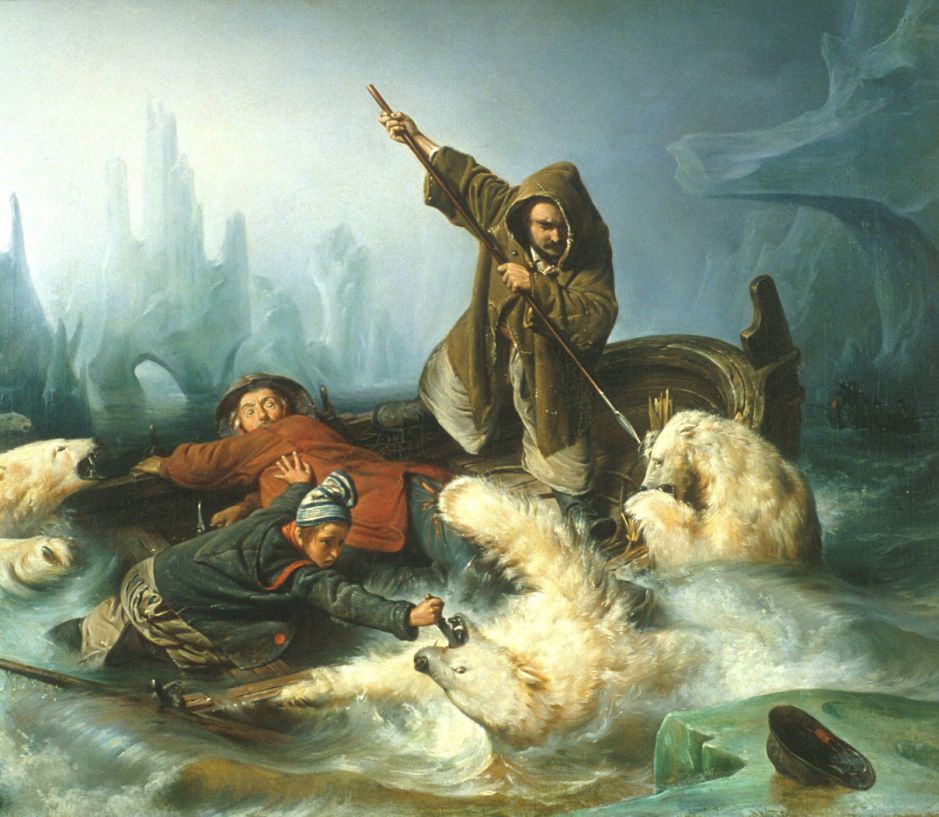
Biard’s most famous painting from this time is this gripping depiction of a Fight with Polar Bears, completed just prior to his departure on the expedition, and exhibited at the Salon in 1839. It is sometimes assumed that this shows a real or dramatised episode from the expedition, but it was painted before he had even left France.
Two men and a boy are in a small boat, which is being attacked by three adult polar bears. They’re trying to repel them using a spear-like harpoon, a hand knife, and an axe, as the bears are threatening to overwhelm their small boat and wound them.
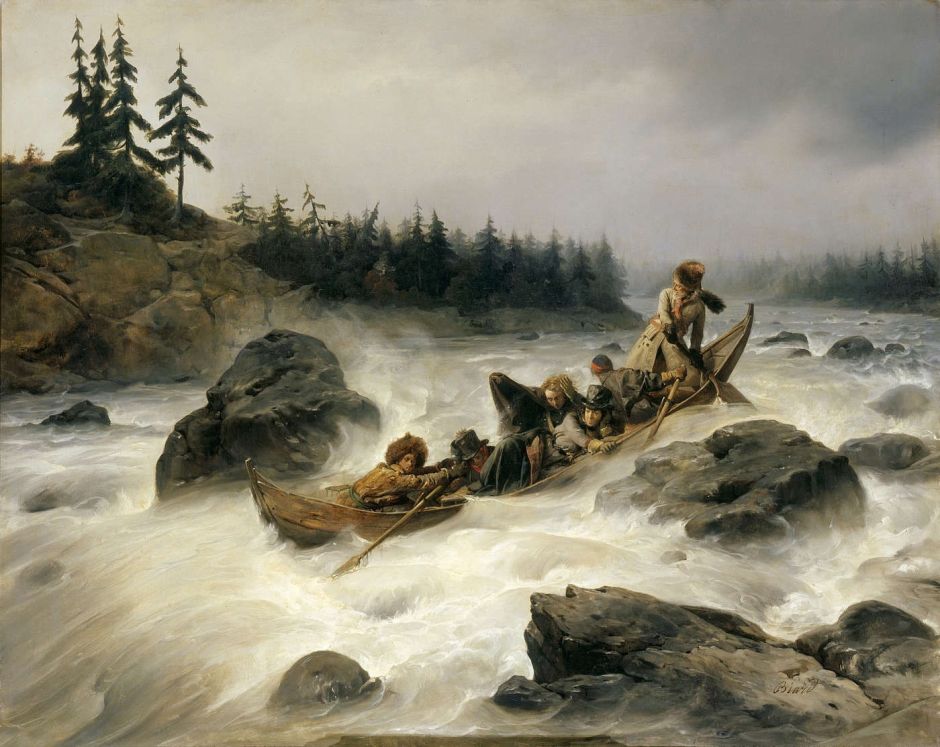
The Duke of Orleans Riding Down the Great Rapid of Eijanpaikka at the Muonio River, Lapland, August 1795 (1840) shows the Duke enjoying a little white water canoeing, and was exhibited at the Salon in 1841. Biard’s depiction of the water is particularly interesting here, as this long predates photography, which much later was able to use short exposures to effectively freeze motion.
During the 1850s, interest in Biard’s paintings started to decline, and his itchy feet returned. Although now into his fifties, he set off on his own personal expedition to Brazil, where he showed particular interest in the great rivers of the Amazon, Negro, and Madeira.

Sadly, few paintings from Biard’s expedition to South America are accessible in usable images, apart from his dark and jewelled view of Amazonian Indians Worshipping the Sun God from about 1860.
Thomas Baines (1820–1875) was an unlikely explorer when he was apprenticed to a coach painter in King’s Lynn, Norfolk, England. He emigrated to South Africa, and in 1855 joined Augustus Gregory’s expedition across northern Australia as its artist and storekeeper.
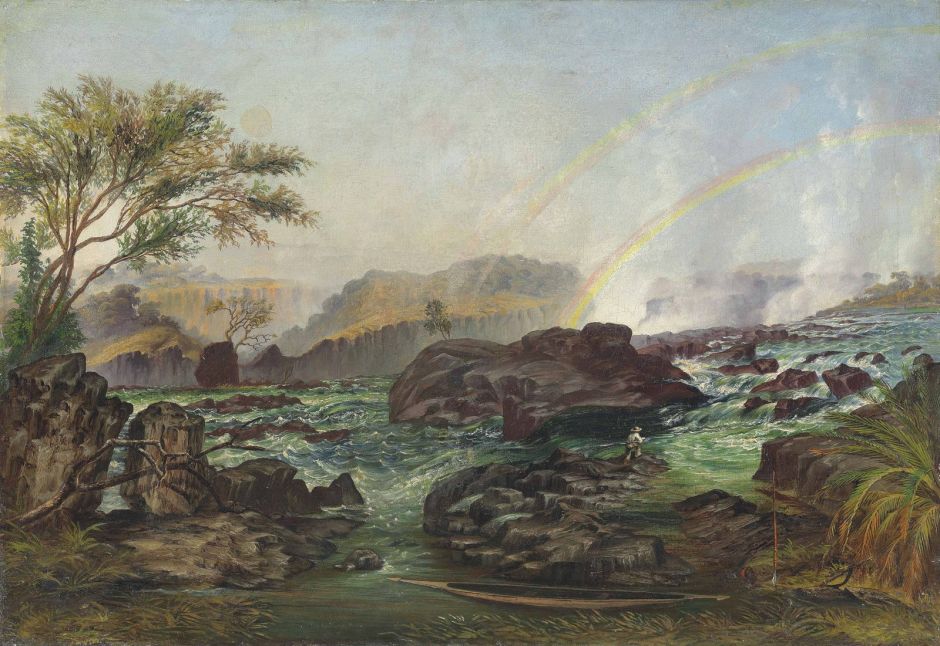
In 1858 Baines joined David Livingstone in his travels along the Zambezi, and was one of the first white men to see the Victoria Falls, which he later painted in his view of The Rapids of the Victoria Falls, Zambezi River (1864). Baines went on to explore south and south-west Africa with James Chapman.
The nineteenth century was a time of great mobility. Nicholas Chevalier (1828–1902) was Swiss by descent, born in Russia, trained in Germany, based in Britain, painted the landscapes of Australia and New Zealand, and died in London. In 1854 he sailed to Australia, arriving in Melbourne, where he worked as an illustrator and was engaged with expeditions to explore the new continent, through an association with the meteorologist and explorer Georg von Neumayer.

Fortunately, Chevalier wasn’t a member of the Burke and Wills Expedition, but painted this Memorandum of the Start of the Exploring Expedition in 1860. That expedition left Royal Park, Melbourne on the afternoon of 20 August 1860 with nineteen men and about twenty tonnes of equipment and stores, as shown here. Their aim was to cross the continent of Australia from south to north, but the expedition was lost, and its leaders believed to have died in June the following year.
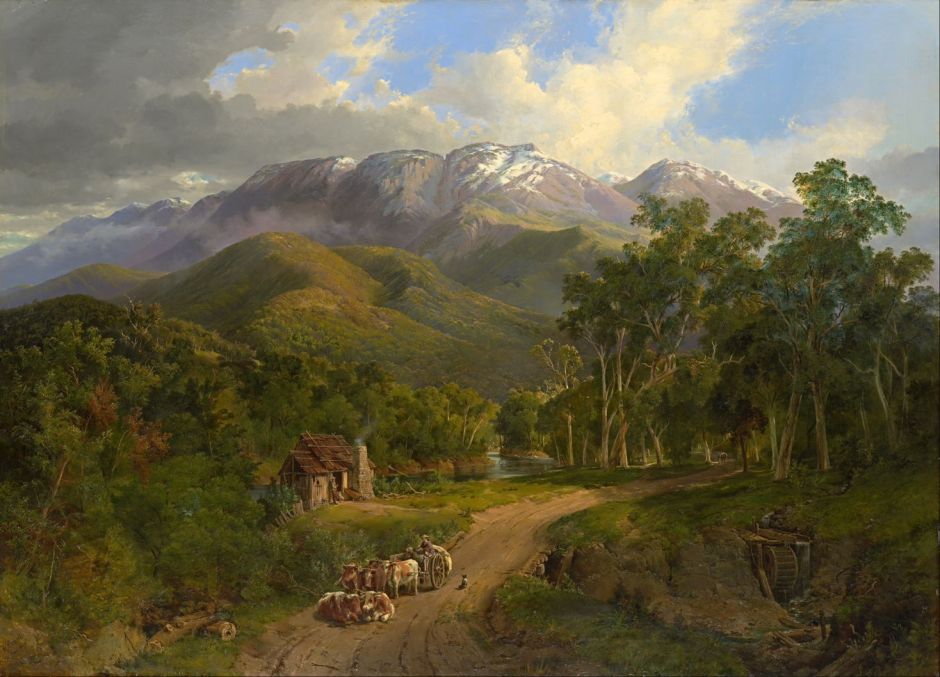
In 1864, Chevalier went on a small expedition to The Buffalo Ranges (1864) in the alpine region of Victoria. Now a National Park, its rugged plateau is about 1700 metres (5,600 feet) above sea level. This view appears to have been made during the winter, when snow settles on the plateau. The small cottage in the foreground has an overshot waterwheel to the right.
Several American landscape painters travelled west with expeditions to explore the interior of that continent, among them Albert Bierstadt (1830-1902).

Bierstadt sought drama in the Rocky Mountains, and in expressing what he saw there on a suitably huge canvas. In A Storm in the Rocky Mountains, Mt. Rosalie from 1866, he uses his full array of skills and sketches from his second expedition to the West in 1863, to express the sublime, and fill the viewer with awe and trembling.
The foreground shows a pastoral valley floor with a native American camp, in mottled light. Some people and their animals are seen making haste to return from the pastures to the shelter of the camp. A small rocky outcrop has trees straggling over it, which are silhouetted against the brilliant sunlight on the lake behind, in the middle distance.
Behind the lake the land rises sharply, with rock crags also bright in the sunshine. In the background the land is blanketed by indigo and black stormclouds. Those clouds are piled high, obscuring much of Mount Rosalie (named by Bierstadt after his wife), but its ice-clad peaks show proud, high up above the storm, with patches of blue sky above and beyond them. A single large bird, an eagle perhaps, is seen in silhouette, high above the lake.
Marianne North (1830-1890) was the daughter of an English Member of Parliament. After he lost his seat, father and daughter took to travelling, starting with the Alps and progressing to Syria and Egypt. After his death, she travelled further afield, spending a year in Brazil. When Frederic Edwin Church, famous for his views of the South American landscape, encouraged her to go south, she did – then on to paint the flora of Japan, Borneo, Java, India and Ceylon.
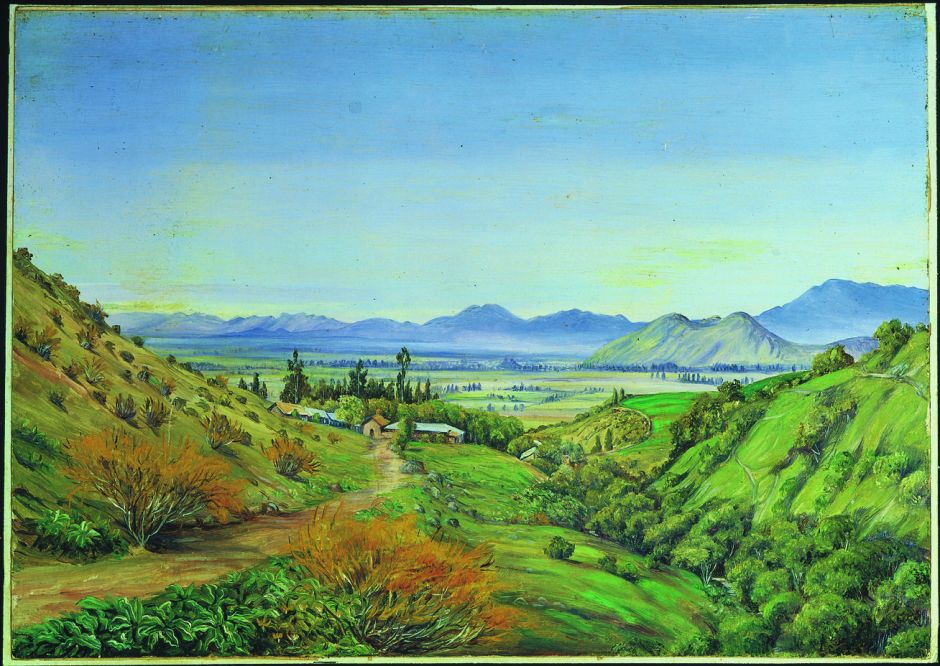
North’s Distant View of Santiago, Chili, from Apoquindo records her stay in South America, and was painted in 1884. Her paintings have earned a dedicated gallery in Kew Gardens, London, a world centre for botanical painting and illustration.
Few painters take their art to the extremes – geographical and climatic – that William Bradford (1823–1892) did, when he painted ships set fast in the Arctic ice. He was born in the port of Fairhaven, Massachusetts, from where Herman Melville, author of Moby-Dick (1851), sailed on a whaler.
In 1861, Bradford sailed for the first time to Labrador, and north to the coast of Greenland, which turned what had been an interest in the Arctic into a passion. By 1866, the huge paintings he made following trips to Newfoundland and Labrador were proving popular and lucrative when they toured US cities.
In 1869, LeGrand Lockwood, a New York banker and art collector, commissioned the ice-strengthened sealing ship Panther to take Bradford and others on an expedition to the Arctic. They sailed from St John’s in Newfoundland in July, and Bradford made copious drawings in pencil and oil sketches during the voyage, and recorded much of it in photographs.
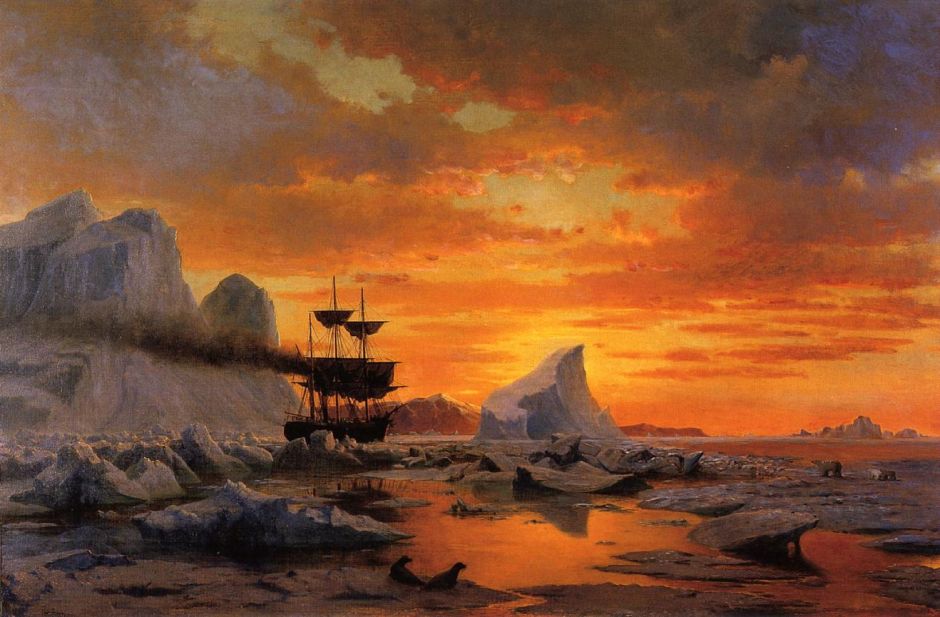
When Bradford was back in his Fairhaven studio after the expedition, he created large finished oil paintings from his sketches made on board the Panther. Comparison of his photos and paintings has demonstrated that he also relied quite heavily on those photos, although they were of course all monochrome. He has flooded this painting, Ice Dwellers, Watching the Invaders (c 1870-79), with the rich reds of dusk. Its title refers to the seals in the foreground, and the polar bear and cubs making their way across the ice at the right.
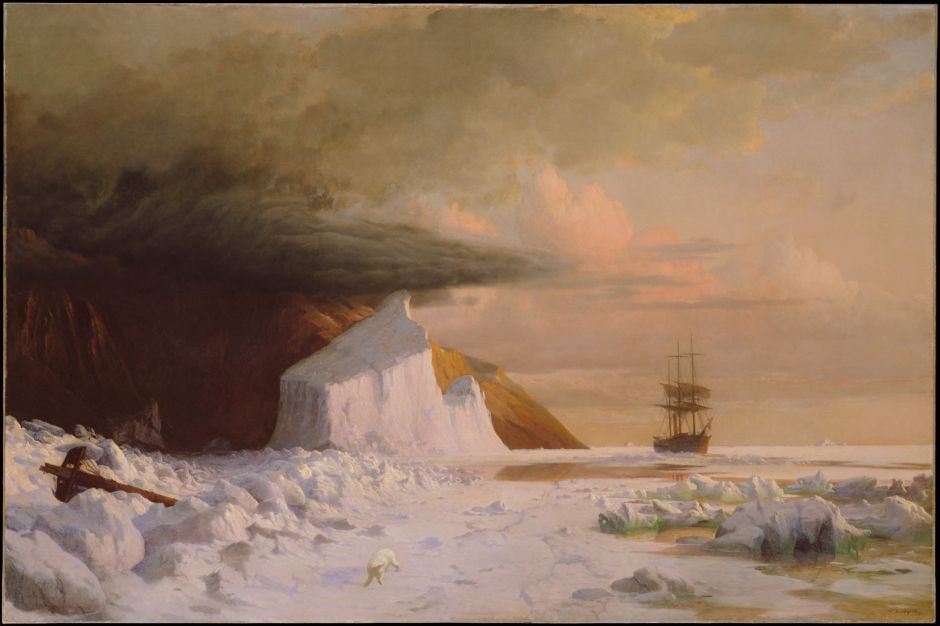
An Arctic Summer: Boring Through the Pack in Melville Bay (1871) shows the Panther working its way through pack ice close to the west coast of Greenland. Melville Bay is a huge bay on the island’s north-west coast, which was an important area for whaling fleets in the nineteenth century. Note the fragment of mast from a wreck, at the left.
I hope you’ll join me next week for the first of many journeys we’ll be making.

